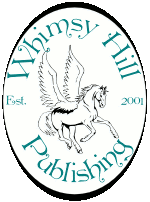By Jim Bernheimer
Every writer has his or her own way of fighting the dreaded writer’s block. Some ways might work for you, or they might not. Here’s the method I subscribe to. As always, your mileage may vary.
The first big thing has to be forcing yourself in front of the keyboard. Go ahead! Just sit right down. Sure, the screen in front of you looks empty now, but you can fill it up.
Say you’re stuck on your fantasy story and all your humans and elves are sitting around bored at the keep waiting for you to produce the mother of all battles where they will lay down their lives. Well, if you can’t think of anything productive to write, how about taking your characters and imagining their reactions if they are watching the big screen version of the Lord of the Rings? Would your elf maidens say that Liv Tyler “is so leading that human on?” Would your barbarians prefer Starship Troopers the book to Starship Troopers the movie?
Alternatively, try writing a brief blurb on two of your characters interacting. Not about the epic battle, but about mundane everyday things. It might not seem useful until you realize that it’s getting you into the heads of your characters. It’s the difference between writing a character and really portraying the character. When writing the character, try to think with that personality. You’re not a space colonist on Vega 3, but your character is. What makes that person or thing tick? What can they see in front of them that gives them a sense of irony or dry humor? Just having a sampling of your character’s thought process in front of you can help you identify with them on a new level and perhaps open up some avenues for introspective thought. Take this rough scene I had from Dead Eye (coming soon from WHS Publications – All Rights Reserved). There’s nothing terribly important in it, but the conversation between them allows me to reach further into their characters and give them more of a past.
* * *
Four hours later, Jenny and I were back on the road, headed north. With some luck there would be a check in the mail from Roanoke County in the next week. I also had Candace’s number, if I was “ever down in this neck of the woods again” and still not dating her cousin.
Mentally, I was picturing the scene when mom asked me what I did today, “Drove four hours, dug up a dead body, and drove back, so not much. How was your day?” when Jenny started in on Candace. “So, did Candy ask you out?”
“Is that important?”
“Unless you’d like to walk, yes, it is.”
“Not really, but she gave me her number.”
My driver looked momentarily angry. “You wouldn’t really go out with her, would you? She may call herself Candace now, but all the boys used to call her ‘Candy’ because she was ‘widely available.’ If you know what I mean.”
“I know what you mean, but I probably wouldn’t go out with her anyway. She lives over four hours away. I still can’t drive until my vision is good enough to get my license back.”
“Suppose she lived closer?”
“Why are we having this discussion?”
“I’m just curious what kind of girl interests you, Ross.”
A word of caution, it’s never a good sign, when a girl calls you by your last name. “I didn’t really get a vibe from her, so probably not even if she lived closer.”
“Good.”
That lie seemed to satisfy Jenny and she put her claws away. She seemed rather pleased with herself after that. Truth be told, I wouldn’t have minded going out with Officer Murphy. I hadn’t been on a real date since I returned from the war. The last real girlfriend I’d had was back in Texas and if we were matching reputations, I’d wager that Candace would have come out better than Heather. She and Don Hodges’ wife, Karen, used to dance at some piss-hole club near Fort Hood and yeah, there’s a reason mothers warn their little boys to never date a stripper, though there are far more reasons why the boys never listen…
* * *
One of the things that I prize above all else is realism. In an outline of the chapter, this would appear as, “Mike and Jenny talk on the way back.” The more real situations you can inject into your story, the easier it is for the reader to suspend their disbelief. You can overcome your audience’s innate doubts about the story by giving them something real to latch onto. Even if the scene is looked at and ultimately sacrificed to the altar of word count, it’s still something that you as the author can dig into and use to identify with your characters.
Best of luck with your writing,
Jim Bernheimer is the coauthor of the forthcoming Dead Eye series from WHS Publications.
